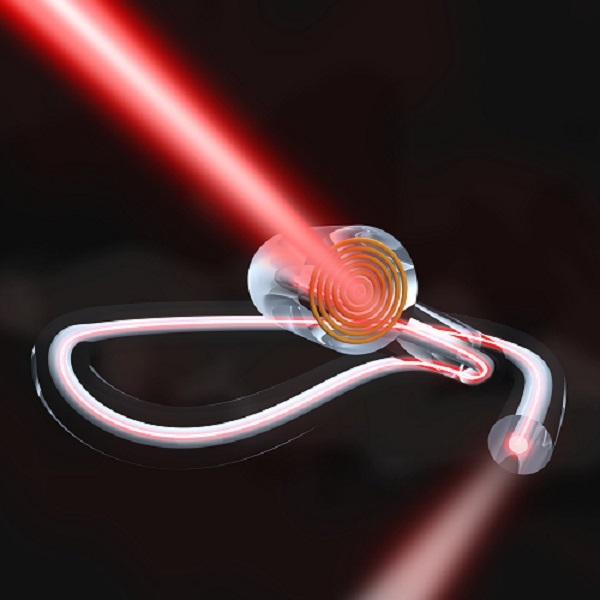ST. PETERSBURG, Russia, Nov. 2, 2020 — Researchers from ITMO, in collaboration with the Leibniz Institute of Photonic Technology and Australian National University, have resolved the fundamental problem of light coupling into optical fiber at incidence angles of over 70°.
The researchers used a dielectric nanostructure with a high refractive index, made from silicon nitride, implemented at the end face of the optical fiber, to overcome the fact that in conventional optical fibers at a incidence angle of 15°, efficiency drops to nearly zero. The drop significantly limits the functionality and potential of optical fiber-based applications.

The nanostructure allows light to propagate through the optical fiber at large incidence angles. Courtesy of ITMO.
Due to the diffractive properties of the ringed nanostructure, light passed through the structure in such a way that it propagated exactly along the optical fiber axis, even under a large incidence angle. The structure’s ringed shape made it possible to capture light of any polarization and incident from nearly any direction. With this design, light in-coupling efficiency increased by four orders compared with traditional optical fibers or those with a metal nanostructure.
“I think we succeeded due to the harmonic combination of specialists in the fields of optical fibers and optical nanostructures, and teamwork between theoreticians and experimenters,” said Oleh Yermakov, a Ph.D. graduate of the Department of Physics and Engineering at ITMO. “We advanced from a superficial understanding of the problem to a detailed concept, analytical description, and a precise numerical model. This helped us come up with the optimal structure design, which was then fabricated and measured by our German colleagues.”
The researchers plan to speed up, simplify, and reduce the cost of nanostructure fabrication through the use of nanoimprint lithography. For now, the researchers are transforming their theoretical advances into an algorithm to find nanostructures for any particular task through machine learning.
The research was published in ACS Photonics (www.doi.org/10.1021/acsphotonics.0c01078).